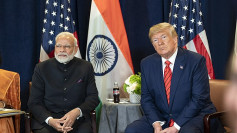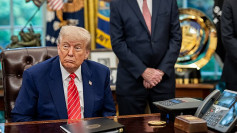China's international trade did much better than expected in October compared to Western analysts' estimates despite the continuing dislocations caused by Trump's trade war.
It exports in October fell 0.9% year-on-year, according to customs data released Friday by the General Administration of Customs of the People's Republic of China (GACC). It was the third straight month of export decline. Economists polled by Reuters had expected a 3.9% drop following September's 3.2% contraction.
Analysts agree that old U.S. tariffs and the newest ones levied Sept. 1 are crimping China's imports, which are also suffering from weak global demand as the global economy cools.
China's imports plunged 6.4% year-on-year for the sixth straight. Reuters' analysts had expected drop of 8.9%. The weak import figures, shrinking factory activity and falling producer prices together confirm the lingering weakness in domestic demand and the ineffectiveness of new government stimulus.
China posted a trade surplus in October of $42.81 billion compared to September's $39.65 billion surplus. Analysts forecast a $40.83 billion surplus. China's trade surplus with the U.S. stood at $26.42 billion in October, up from $25.88 billion in September, according to Reuters calculations based on customs data.
Despite the surprisingly upbeat trade data for October, the outlook for the Chinese economy for the rest of the year isn't positive.
"Looking ahead, we think that subdued global growth will continue to weigh on exports," wrote Martin Rasmussen, China economist at Capital Economics in a note to investors on Friday.
"This headwind is unlikely to be fully offset by the partial tariff rollbacks that are being proposed as part of the 'Phase One' trade deal, especially given that the recent appreciation of the renminbi in anticipation of a deal means that the exchange rate will act as less of a prop to outbound shipments," he added.
On Thursday, the Ministry of Commerce said Beijing has agreed with Washington to lift existing trade tariffs between the two countries in phases. Both countries are now also closer to a limited phase one trade deal after constructive negotiations over the past two weeks, said Gao Feng, a spokesperson for the commerce ministry.
China is insisting on one important condition for a limited trade agreement. Feng said this demand is the U.S. and China must remove the same amount of tariffs at the same time.
The news from China comes on the heels of reports the meeting between President Donald Trump and Chinese President Xi Jinping has been postponed to December from November following the ongoing riots in Chile where both leaders are to have met. Xi and Trump were to have signed the limited phase one agreement during the APEC summit in Santiago that was to have taken place from November 16 to 17.






